Resources
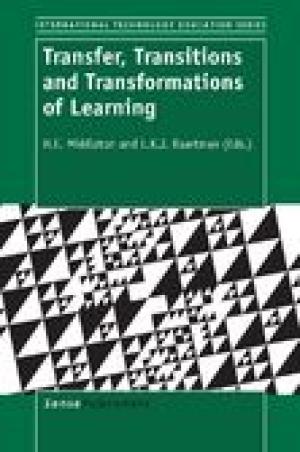
This edited volume of eleven articles explores the concepts of transfer, transitions, and transformation within a focus of educational technology. This title is part of the International Technology Education Series, and the authors mainly come from the field of education. The articles engage a number of fields including: engineering, science, technology, vocational education, nursing, and architecture. The opening chapter provides a literature review of transfer, especially in relationship to transitions and transformation. A successful transfer is defined as “a product where something learned in one context is used to assist learning in another context” (2). The authors explore this concept in regards to motivation, sameness and difference, unproductive transfer, transfer in relationship to transitions and transformation, and transfer as boundary crossing. After this introduction, various authors offer research studies and exploratory essays around these subjects. Several of these studies deserve special mention. Bjurulf’s chapter on the LISA (Learned in Several Arenas) Project explores transfer between work and school within vocational education. This research study uses semi-structured interviews to explore the nature of transfer. Her research supports the conclusion that the transfer of knowledge must be a holistic blending of practice and theory. Another article by Baartman, Gravemeijer, and De Bruijn examines transfer in relationship to technology in non-technical jobs as boundary-crossing skills. They engage transitions, which encompass successfully taking a learned concept from one situation and applying it to another situation. For these authors, and in a number of articles in this book, transfer occurs as a consequence of transitions. Baartman, Gravemeijer, and De Bruijn observe that boundaries should be viewed as learning opportunities as students work to successfully take skills back and forth between school and the workplace. They indicate that it is important to design education for successful transitions that empower boundary-crossing opportunities. Some of the articles, such as Pavlova’s and MacGregor’s, focus upon transformation and transitions, but many of articles do not engage either concept. Both Pavlova and MacGregor engage transformation in terms of the self and as social change. For Pavlova, transformation is demonstrated in both critical self-reflection and emancipatory change. MacGregor focuses on factors that foster or inhibit transformation in teachers as they make the transition from their last year at university to their first year in teaching. MacGregor’s transformation also engages self-reflection as teachers’ identities are transformed by their experiences of teaching and learning. Many of these studies might be considered essays or well-developed literature reviews rather than research studies, because they lack an identifiable research methodology. Overall, the various articles appear to be disconnected and underdeveloped with the exception of the authors mentioned. A final concluding chapter would have been helpful to weave these articles together and draw some overarching conclusions. However, the articles are easy to read, contain good bibliographies, and provide an introduction to the scholarly discourse around transfer. For theological education, transfer is an important aspect of field education. The relationship between theory and practice and methods of creating transfer between the two is critical for the quality of theological education, but the value of this title for theological education is limited. Theological schools with strong pedagogical educational programs or terminal degrees in education might benefit from adding this title to their libraries. Universities with graduate educational programs would want to add this title, especially for those with vocational teacher preparatory programs.
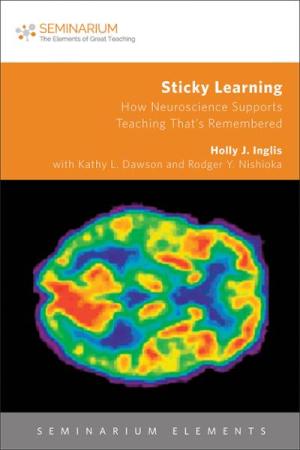
In many ways, Sticky Learning is all business. It has no traditional introductory or closing material and ends simply with a works cited list. This volume is divided into three major sections. The first section (composed of only chapter one) lays out the current landscape of education. In it, Inglis asks readers some basic pedagogical questions, such as what defines “effective learning” and how did we learn to teach. The second section (chapters two, three, and four) lay out a roadmap for where learning is headed. Inglis argues in chapter two that there is a differentiation between teaching and learning. Teaching occurs when an instructor simply imparts knowledge; learning occurs when the students interact with the instructor and actively apply what they have been taught. In chapter three, Inglis moves from learning theory to brain studies. As with each chapter in this book, her discussion is marked by brevity. She offers a concise, easy to understand introduction to brain science research condensed from larger, more detailed volumes such as Brain Rules by John Medina (2008) or Learning and Memory by Marilee Sprenger (1999), both of which are cited in the chapter. The majority of the research comes from the work of noted biologist James Zull and is operationalized through David Kolb’s model for experiential learning. In chapter four, Inglis discusses the five “pathways to memory” and three major reasons why we have trouble remembering information. Again, most of the material in these chapters is a concise summation of what the reader can find in the books by Medina and Sprenger noted above. In this reviewer’s opinion (one who has a limited working knowledge of the relationship between neuroscience and educational psychology), these two chapters alone are worth the price of the volume. After reading through these chapters, I was informed about the readily accepted correlation between neuroscience and educational psychology and also was empowered to integrate these theories into my own teaching. (I am already using Kolb’s theory, but now understand how to maximize it in my teaching.) The “Making It Stick” features that follow each content section provide reflective questions and practical applications which promote a “learn-do” environment for the reader to immediately assess the validity of Inglis’ arguments. The final section (chapters five through eight) provide a challenge to take what Inglis has argued in the previous half of the book and apply it directly to classroom contexts. While chapters five and seven – both authored by Inglis – were helpful, I found that chapters six and eight cancelled each other out. Chapter six, by Nishioka, provides a response from one who has used these concepts in his classroom, as demonstrated by the real-life examples. Chapter eight, authored by Dawson, offers a case study of how one can apply the arguments and concepts set forth in the book. In my opinion, either one should have been chosen over the other, or Nishioka’s reflections should have been included in the larger treatment rather than as a stand-alone chapter. This is, however, my only real complaint with this volume. I especially appreciated the websites and QR codes to unlock additional content that are scattered throughout the book. Overall, this is an important book for educators at any level to read and wrestle with as they continue to seek the best ways to educate their students.
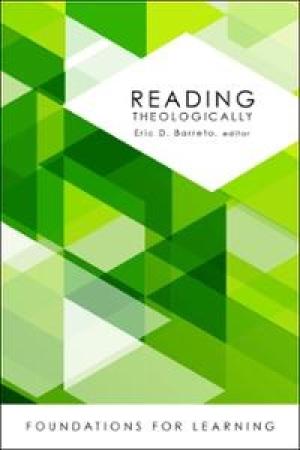
This collection of essays is intended for Christian (more particularly, liberal Protestant) seminarians, especially those beginning their studies at a seminary. It provides guidance on how to read as a seminary student and, thereafter, as a person in service to the church. Essays by eight theological scholars address several types of reading that are important for the seminarian: reading basically, meaningfully, biblically, generously, critically, differently, digitally, and spiritually. The scope of the book might seem narrow, and in various places a lack of awareness about potential readers does come to the fore (especially in the chapter on reading biblically, which seems oddly unaware that much of Christian scripture is shared with another faith community). But most of the chapters take up problems and possibilities of reading useful in any academic context, whether in a seminary or a college. Thus the chapters “Reading Basically” (Melissa Browning) and “Reading Meaningfully” (Miriam Perkins) are outstanding introductions to what it means to read actively in any academic field in the humanities. While the examples Browning and Perkins marshal happen to come from Christian religious literatures, the concerns these chapters raise and the techniques they inculcate are relevant to any student, whether of religion or anything else. The chapter “Reading Digitally” (Sarah Morice Brubaker) examines critically some of the habits of reading and debate encouraged by the Internet. Brubaker shows with wit and genuine insight that what can be called “analog reading” involves slow, continuous engagement, as opposed to the quick, discontinuous “digital reading” too often encouraged by the internet. Yet she by no means endorses Luddism, conveying instead realistic advice on how to overcome the confirmation biases that the internet intensifies. The chapter “Reading Generously” (Gerald Liu) takes up a major theme in the study of literature and relates it convincingly to a Christian ethic. Other chapters focus on issues specific to the experience of seminarians (and not only liberal Protestant ones), such as the unhappy tendency of academic analysis of scripture to extinguish, for many students, an enthusiastic approach to the Bible. In the chapter “Reading Spiritually,” Shanell Smith acknowledges this problem but does not indict academic analysis, showing instead how to confront the challenges seminarians face while studying scripture in a context radically different from what they knew earlier in church or youth group so that a deeper engagement with scripture can emerge. A theme that recurs through several chapters is the importance of cultivating a practice of reading as dialogue or conversation. This practice can be useful for any engaged reading but is especially crucial for the study of scripture. Reading Theologically is readable and frankly prescriptive; it is full of imperative verbs that tell the reader what to do in order to utilize one’s reading to grow in wisdom and faith.
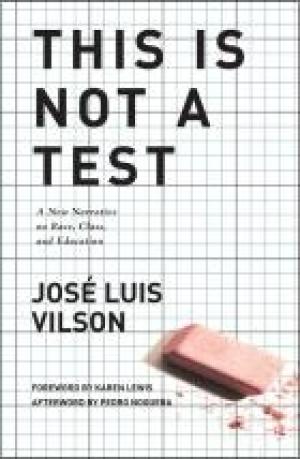
At first blush, Jose Luis Vilson’s book does not seem to fit well in a discussion of theological graduate education. After all, he is a middle school math teacher in New York City, concerned with the Common Core State Standard and bulletin boards (112-14). As the subtitle suggests, the book is narrative, a conglomeration of stories divided into three parts and chapters with titles that evoke emotion but do not lend themselves to a chronological flow or pattern. Given Vilson’s predilection for poetry and music, this is both understandable and welcome. The stories within each part jump around chronologically, but the three parts seem to revolve around Vilson’ own educational journey, his journey as an educator, and his journey as an educational activist. What comes through in each section is Vilson’s passion for education done well and his story-telling skills, both of which make the book a compelling read. As a sixty-something-year-old white guy who grew up in the South, our narratives, while similar at points, diverge greatly. Vilson’s stories of the tensions in his Dominican-Haitian upbringing, his frustration on what to do with the rat in the bathtub, and his encounter with a racist English teacher in high school fill in gaps in my own story. But he also challenges my story and makes me uncomfortable. I was bothered when he called George Zimmerman a child murderer (149), not because I thought Zimmerman was innocent but because I do not usually think of seventeen-year-olds as children. I do not enjoy being made to feel uncomfortable, but I need to be challenged. Other references to New York City politics, secondary school board issues, and rap music sent me to Google and to Vilson’s blogs and speeches. Yet many of the secondary-education issues Vilson raises resonate in graduate theological education as well. How do we assess student achievement? In the midst of our clamor for accountability, how do we keep our focus on students? What is the role of technology in the classroom? Does teacher presence really matter? The most compelling issues raised in the book are highlighted in the subtitle: race, class, and education. In a field where old white guys dominate (graduate theological education), how do we open and maintain a dialogue on the issues of race and class? Do we wait for people of color to broach the subject, or as Vilson’s white friend Chris suggests, do we who are white speak up so people of color do not have to (148)? The answer is obvious. The book incorporates several events in Vilson’s life that are preserved digitally. I suggest reading “How to Drop the Mic” (157-168) and then watching Vilson’s speech at the Save Our Schools March, or reading the following chapter on teacher voice and then watching Vilson’s TED talk (both can be accessed at https://thejosevilson.com/). Vilson’s parting words challenge me: “If you can’t teach, then do. Something else is preferable. But if you can’t do, then don’t. As a teacher, I’m in charge of believing you can – so do. If you plan to do, then do this. Go hard or go home” (215).

Designing Teacher Evaluation Systems is a collection of sixteen articles analyzing data produced by the Measures of Effective Teaching project, an initiative of the Bill and Melinda Gates Foundation. The research was conducted with three thousand pre-collegiate teachers working in urban districts. The results and the articles forming the book itself are divided among three themes: using data for feedback and evaluation, connecting evaluation measures with student learning, and the properties of evaluation systems. In short, the book takes on the challenge of what classroom observations and standardized test scores can tell us about good teaching. The core audience for the book seems to be those responsible for educational policy and leadership in primary and secondary schools. University faculty, especially those responsible for the evaluation of classroom teaching, may find this book to be of some use. The third chapter underscores the difficulty of consistency in classroom observation scores and insists on training procedures “that discipline observer judgments in order to produce valid and reliable scores” (53). The chapter goes on to analyze the distinctive approaches of “master scorers” versus those who are newly initiated. Similar arguments are made in the twelfth chapter on minimizing rater bias in classroom observations. The tenth chapter, “Understanding Instructional Quality in English Language Arts,” may be interesting to instructors in the humanities at any level. The authors of the study note that evaluation systems “make transparent what an organization values” and “no observation instrument is neutral” (325). They report that instructional quality varies in relation to the content of lessons and single out the teaching of writing as particularly challenging; an insight that college educators can appreciate. In chapter eleven, researchers investigate how “working conditions predict teaching quality and student outcomes” (332). Their evidence reveals that “active believer” teachers who maintain high expectations for their students and participate actively with colleagues produce better results in their classrooms. Amusingly, teachers in the contrasting and ineffective category are deemed “isolated agnostics.” It is also shown that students benefit from a mixture of “academic support” and “academic press” – they are fostered in different ways by being both cared for and challenged. This chapter ends with a list of thought-provoking implications for how educational leaders can create a better environment for effective teaching. Chapter fourteen offers another look at the “cognitive complexity” of scoring classroom observation rubrics (436). It is suggested that an observation cycle might be an effective remedy, where an initial thirty-minute observation focused on scoring a rubric precedes a longer diagnostic observation. In this way the observer is able to provide more focused feedback. The data-driven authors of this book would be the first to admit the conclusions within are not necessarily translatable to the college environment. I cannot, therefore, recommend a cover-to-cover reading to faculty working on the evaluation of university teaching. I do, however, believe that individual chapters contain interesting points of reflection on the teacher evaluation process at any level and have endeavored to highlight some of the best examples above.
This volume of twenty-one essays comes from the Professional and Organizational Development Network in Higher Education (POD) and is directed to faculty and institutional development staff, department chairs, faculty, deans, student services staff, chief academic officers, and educational consultants. Commensurate with their agenda to facilitate creative exploration, the essays are organized after they are collected, and arranged loosely by topic with about three essays per topic. The topics include developing new paradigms for faculty and professional development, tailoring faculty development to diverse audiences and partners, refining faculty development programs for maximum impact, reflecting on and advancing what developers do, responding to different graduate teaching assistants’ needs, enhancing student learning, and advancing new pedagogical concepts. The essays are written by educators and developers throughout the POD network and undergo a double-blind peer review system. As such, they do not deal with classroom teaching and application per se, but with ways to motivate, involve, measure, and prioritize self-reflective and critical development among educators. Several essays are of particular interest because they propose responses to changes emerging in higher education. Drawing on research into video games and their ability to attract and retain learners, for example, an essay by Kevin Yee encourages educators to apply game theory principles to course design (335-348). Even when instructors might not have the technical savvy to generate their own video game, they can apply the principles of successful gaming with low-tech options in their course design. For example, instructors might design learning opportunities that are narratives (such as a case study or an urgent problem that needs to be solved), have calibrated difficulty and rapid feedback response (such as online quizzes that can be taken until they reach 100 percent), employ diversions (such as add-on TED talks), and generate competition. Another essay, by Al Rudnitsky et al., describes a college-wide multiyear professional development effort that addressed the need for instructors to adapt their expertise to changing needs of students (127-143). It examines how instructors at Smith College formed a process-oriented (rather than skill-based approach) faculty learning community that explored recent research on how people learn, applying it both in their classrooms and in their learning community. They applied such principles as these: ultimately learning depends on what learners do, not what teachers do; existing knowledge has a profound effect on learners’ current thinking and learning; effective learners are metacognitive in that they set goals, self-monitor, and self-regulate; and learning is socially situated and mediated; the instructor’s task is to design complex learning environments and motivate students through evaluation. They contend, “understanding and deep learning that allow for better knowledge transfer and preparation for future learning are privileged educational outcomes” (133). The goal of the process, they found, was to build knowledge through discourse, idea improvement, and collective cognitive responsibility (135). In a third essay worth noting, Michael J. Zeig and Roger G. Baldwin describe concrete recommendations to help senior faculty (sixty-plus years, about 33 percent of professors in the U.S.) develop new meaning and purpose in this phase of their academic life. They suggest that senior faculty reflect on the priorities of their career and identify what resources they need, reconsider what success means in late career, seek out co-mentoring opportunities (in which younger faculty members share their expertise with their mentors, especially in technology), and plan their own professional development. Administrators, deans, and chairs need to see senior faculty members as individuals, maintain reasonable expectations, provide relevant development opportunities, and recognize and appreciate achievement (83-86). This volume is a valuable resource, with a rich bounty of essays geared to building, sustaining, evaluating, and promoting faculty development programs.
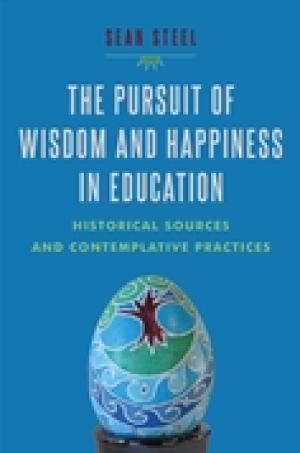
Steel includes in this work both recommendations and critiques that follow from his conviction that educators can and should take up the study of philosophy in their classrooms, which in this discussion is K-12. Using a foundation of classical Greek philosophy, the author takes up five themes in the book: (1) a survey of current ideas about how the pursuit of wisdom is or is not part of education; (2) a retrieval of ancient and medieval ideas of wisdom and the search for wisdom; (3) a critical examination of educational trends and practices and the barriers they create to the pursuit of wisdom; (4) use of ancient and medieval thought to assess current educational movements that aspire to promote wisdom; (5) a survey of movements understood as contemplative pedagogies and some cautions about their limitations. Finally, he indicates his own proposal for this project. Steel critiques current educational practice along lines that many readers will find familiar: emphasis on assessment, stress on global competition, and pursuit of technological expertise without concern for ultimate ends. All of these, he argues, have not only been mistaken for the ideal goals of education, they militate against the real goal – the pursuit of wisdom. Steel prescribes these as essential for the attainment of wisdom: schole (leisure) leading to theoria (seeing) the ultimate good through the experience of metaxy (an experience of tension as one reaches from ignorance toward the Supreme Good, ultimate truth, or being as such). Taking from Plato the movement of ascent and descent as essential to reaching toward wisdom, he emphasizes the necessity of “dying to self and all that is not wisdom” (4). Steel is thorough in explaining his viewpoint in relationship to a host of educational greats: Augustine, Aquinas, Maimonides, Pieper, and Bloom, to name but a few. The author states clearly that the pursuit of wisdom in a classroom today is likely to create serious negative pushback from the whole educational establishment. He believes this because he is convinced that only awareness of one’s ignorance makes wisdom possible. Such an experience of ignorance, he argues, is sure to be deeply uncomfortable and even intolerable for today’s students who are trained to attain the “right” answer above all. Such a practice is also contrary, he finds, to the mandate given teachers to produce students who can pass the required assessments. For the most part Steel leaves it to the reader to navigate a second potential problem, the fact that an educational institution may not necessarily agree that assisting students to reach toward the Supreme Good (or some other ultimate) is part of their educational mandate – or is even permissible. Steel acknowledges that philosophical programs and contemplative pedagogical movements that aspire to facilitate student encounters with wisdom are present. Many of these, he argues, do not reach their essential goal because they are used as a means to some end other than wisdom: health, relaxation, or happiness, for example. According to Steel, “contemplative activity is not a tool for happiness; it is happiness, for it is the highest activity of the best part of the soul in relation to its most sublime object in the Supreme Good” (259). His own programmatic proposal is extremely brief as a proportion of this substantial book and chiefly cites his own experience in teaching Greek philosophy to high school students and using more modern texts such as Walden to encourage a contemplative experience of the world. This volume will be appreciated by those interested in the intensive application of classic Greek philosophy to current educational practice and to a critique of current contemplative pedagogical movements.

Roger S. Nam During my three years as a student at Chongshin Theological Seminary in Seoul, Korea, I never heard a single discussion related to diversity. The student body was roughly 90% male. Every student and faculty member was a member of the Korean Presbyterian Church, and engaged in some.

At a gathering of theological school deans one activity had the deans share the job descriptions from each of their schools. This group of deans was from a variety of contexts: different geographic regions, various denominations, free-standing and university-embedded schools,...

Kate Blanchard Last Monday I wore a suit to work, an occurrence rare enough that my students felt led to comment upon it. “You look so nice today!” exclaimed one, to which another quickly retorted, “That makes it sound like she doesn’t usually look nice!” A couple of others joined.
Wabash Center Staff Contact
Sarah Farmer, Ph.D
Associate Director
Wabash Center
farmers@wabash.edu